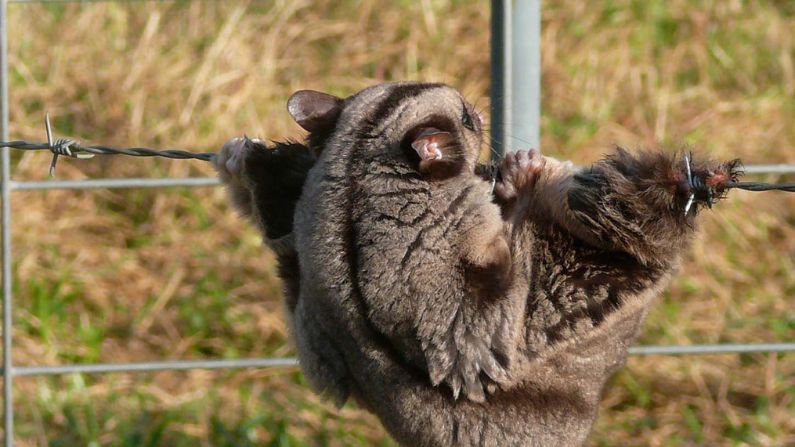Urban backyards and places where people live have structures for human convenience and safety. However, these structures may be inconvenient and unsafe for wildlife. Read these tips to make pools, fences, and roadsides more fauna-friendly.
Swimming pools
Dangers to wildlife: Animals and birds that fall into swimming pools drown if they can’t get out. Many animals — including reptiles, amphibians and birds — try to use a pool as a natural pond. They either fall in by accident, while trying to drink or get in and can’t get out.
Make pools fauna-friendly:
Stop animals getting into the pool in the first place or make it easy for them to get out.
- Put a pool cover over the pool at night.
- Check your pool filter box every day for frogs and reptiles.
- Attach a low-shade cloth barrier around the inside of the pool fence. This helps prevent small frogs, reptiles and other crawling animals from coming inside the fence and falling into the water.
- Make an escape route for animals that do fall into the pool. Keep the water level high so that wildlife can climb out easily.
- Most animals can get out on a fixed rope. Tie one end of a sturdy rope to a secure point outside the pool. Tie the other end to an empty plastic milk or juice container and let it float in the water.
- Koalas cannot always escape on a rope, so put a board across the pool corner near the steps for them to climb out if you have koalas in your area.
- Ducklings can also use a board if it is close enough to the water level. Keep ducks out in the first place — stretch ropes across the pool to make it difficult for them to land on the water.
Fences
Dangers to wildlife: How you choose to mark your boundary has a big impact on local fauna. Fences that stop fauna from moving from one area to another are bad for wildlife feeding, migration, breeding and social patterns.

image: © Daryl Dickson
Make fences fauna-friendly:
- Does your boundary really need a fence? A local native flora hedge can do the job and be fauna-friendly too. Hedges and bushes of shrubs provide wildlife corridors, food and habitats. Keep hedges trimmed to maintain their shape and dense foliage.
- If you do have a fence, make it easier for fauna to cross. Plant trees or shrubs on either side of the fence or lean solid wooden poles on both sides for animals to climb up and over. Don’t string wire strands too tight.
- Design your fence to allow fauna to pass through. Here are three design ideas:
- Leave a 50 cm gap between the ground and the bottom strand or rail.
- Leave 30 cm gaps between rails or strands.
- Use box wire mesh or chain link with mesh spaces of 15 cm or larger. Make the fence 1.2 m high at most and leave a 30 cm gap between the ground and the fence bottom.
- Barbed wire or electric fences are not fauna-friendly. We recommend Wildlife Friendly Fencing. If you do need to use barbed wire, modify the fences where they are likely to catch wildlife, such as creek crossings and areas regularly used by gliders or fruitbats.
- Use plain wire for the top two strands of the fence.
- Cut sections of poly pipe lengthwise and cover the barbed wire.
- Fix an apron of bird netting over sections of the fence.
- Grow tall grass along the fence to stop bats and birds from trying to fly through. Grass also gives other wildlife plenty of cover to cross the fence.
Roadsides
Dangers to wildlife: Roads are a major source of fauna injuries and deaths. Roadside plants shelter wildlife but animals can also easily move onto the roadway where traffic is moving too fast to avoid hitting them.
Make roadsides safer for animals and birds:
- Increase visibility along the roadside so that drivers can avoid animals. Keep roadside vegetation down, trim long grass and get rid of structures that can hide animals approaching a road.
- Avoid planting flowering plants right by the roadside. These plants attract possums and birds to the road, which makes them more vulnerable to being knocked by vehicles.
Driver awareness:
Avoid many wildlife road deaths by driving more slowly when visibility is poor. If you see an animal on the road in front of you, brake safely and sound your horn. This is usually enough to send even the most dazed bandicoot scurrying to safety.
- Note: When adapting or modifying fences, you must comply with local authority bylaws and the Dividing Fences Act 1991.
